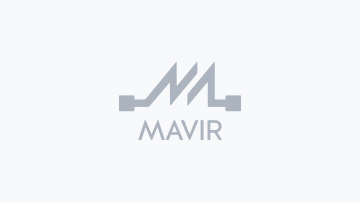
Could the engineers of the Egyptian pyramids possibly have foreseen that the monumental structures would survive several millennia? Or that their extraordinary skill and craft would inspire future generations of architects? We may never find out. Either way, thanks to their sturdy architecture, distinctive characteristics and innovative design, the pyramids have stood the test of time and belong in the hall of fame of human ingenuity. They still set the benchmark for architects and teach them that there are virtually no limits to what can be achieved. And yet, sometimes even constructions as solid or models as time-tested as the pyramids face some strong challenges.
Keeping up with the times
The pyramids of the energy sector, transmission system operators (TSO), had to respond to such a challenge when the power market was liberalized. All of a sudden they were forced to become experts in commerce: they had to sell and market their infrastructure capacities and transport services - in addition to performing their regular engineering tasks. That dramatic change within the industry made it clear that the introduction of robust, secure and long-lasting IT systems was required and inevitable all over Europe. Still, twenty or even ten years ago, nobody could have foreseen the speed and the dynamism of market integration, and the advances in IT technology that would enable it.
Gradually, the scalability and rapidity of new functional modules and system implementations became not only the benchmark but the norm. IT architects both on the customer and the supplier side now have to create concepts that can guarantee security, stability and strong performance. At the same time, whenever necessary, those concepts also need to allow for the replacement of modules and the addition of functionalities that were previously outside the scope of a particular project. Microservice architecture and the agile IT development approach - increasingly popular among European TSOs - make this type of operation possible.
An ambitious joint project
MAVIR, the Hungarian power transmission system operator, has recently contracted three IT companies to deliver a modern control reserve management system (SZOFI). The new agile IT project is planned to run in four phases for several years, with the first phase currently being contracted. We have received a significant share of that phase.
We will deliver the ancillary services module and system integration, while the other two contractors will provide reporting, settlement preparation, control unit parameter modules and the service that enables the transition from the old system. Our chief responsibilities as system integrator include:
- aligning and prioritizing development tasks as well as identifying further development needs if necessary;
- initiating and participating in any technical and business-related discussion;
- preparing and hosting meetings for the contracting parties;
- prioritizing incoming queries and issues
As the development company responsible for delivering the ancillary services module, we will deliver a solution that comprises six parts. Four of those (long-term capacity tendering, short-term capacity tendering, secondary markets, and tender documentation management) already exist but are in dire need of an extensive overhaul. The remaining two modules (energy fee bidding and RIR bid management) will be newly developed. The delivery criteria include the completion and handover of all the associated program interface processes, documentation and services. The ancillary services module is without doubt the principal delivery task within the project, with an allocated quota of 1,790 man-days.
To guarantee the successful cooperation between the parties involved, Scrum methodology will be used throughout the project - an exciting challenge from a system integration perspective, considering that the other contributors will also be developing independently. We will be facilitating this cooperation and developing the common architecture that is expected to lay the foundations for a flexible, scalable system that can organically grow with future requirements. Furthermore, it will also be our responsibility to test all data connections and to coordinate the interfaces required for the communication between applications. The tasks related to system integration will take up a substantial share of the man-days deemed necessary to complete this project, thus securing us more than 50% of a budget planned for 4,377 man-days.
Unlike the pyramids in Egypt, the system we will be developing may not be around thousands of years from now, but it should be flexible enough to adapt to any changes in the market and regulatory environment. We are honored to be part of this exciting project and are looking forward to working with MAVIR and our fellow contractors in a long-term partnership.
For more information, see the original announcement (Hungarian).





